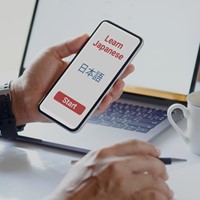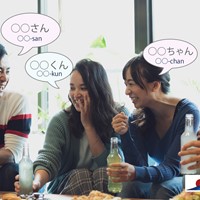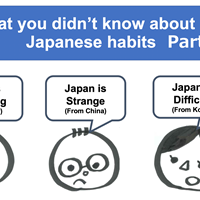Essential Japanese Phrases and Cultural Tips for Dining in Japan

This article is contributed by Wakoku.
The culinary journey through Japan extends far beyond just savoring the exquisite flavors of sushi, ramen, or tempura. It's an immersive cultural experience where understanding the language and customs can transform an ordinary meal into an unforgettable adventure. For international visitors, navigating Japanese restaurants might initially seem daunting, but with a handful of essential phrases and cultural insights, you'll dine with confidence and earn appreciative smiles from local staff.
Why Learning Restaurant Japanese Matters
In Japan, food culture is deeply intertwined with traditions of respect, gratitude, and mindfulness. While many restaurants in tourist areas might offer English menus or have English-speaking staff, venturing beyond these zones opens up authentic dining experiences where a few Japanese phrases become invaluable.
Beyond mere convenience, attempting to speak Japanese in restaurants demonstrates respect for the culture and often results in warmer service, recommendations of hidden menu gems, and sometimes even complimentary treats from appreciative chefs.
What You will Learn in This Article
- Essential Phrases for Every Dining Stage
- Essential Dining Etiquette in Japan
- Restaurant Types and Specific Etiquette
- Navigation Tips for Different Dining Scenarios
- Digital Aids for Smoother Dining
- Seasonal and Regional Dining Considerations
- FAQ: Japanese Dining Etiquette
Essential Phrases for Every Dining Stage

Entering and Getting Seated
Your restaurant experience begins with the greeting. Here are phrases to start things off smoothly:
| Japanese | Romaji | English |
| こんにちは | Konnichiwa | Hello (daytime) |
| こんばんは | Konbanwa | Good evening |
| 何名様ですか? | Nan-mei-sama desu ka? | How many people? (You'll hear this) |
| ・・人です | [number] nin desu* | ・・people (Your response) |
| 予約をしています | Yoyaku o shite imasu | I have a reservation. |
| 禁煙席をお願いします | Kin'en-seki o onegai shimasu | Non-smoking section, please. |
Real-life example: When entering a popular izakaya in Shinjuku, you might be asked: "何名様ですか?" (Nan-mei-sama desu ka?). You can respond: "二人です" (Futari desu) for two people.
Note: Only "hitori" (one person) and "futari" (two people) are irregular in the Japanese counter system. After that, you simply add “-nin” for people — for example, san-nin (3 people) — but note that "4 people" is an exception and becomes yo-nin, not shi-nin or yon-nin.
To learn more about the complex Japanese counting system, check out 'Counting in Japanese: Learn with Ease & Efficiency'.
Ordering Food and Drinks
Once seated, these phrases will help you navigate the menu and place your order:
| Japanese | Romaji | English |
| すみません | Sumimasen | Excuse me (to get attention) |
| メニューをください | Menyū o kudasai | Menu, please. |
| 英語のメニューはありますか? | Eigo no menyū wa arimasu ka? | Do you have an English menu? |
| おすすめは何ですか? | Osusume wa nan desu ka? | What do you recommend? |
| これをください | Kore o kudasai | I'll have this, please (pointing). |
| ・・をください | ・・o kudasai | I'd like ・・, please |
| 生ビールをください | Nama bīru o kudasai | Draft beer, please. |
| お水をください | Omizu o kudasai | Water, please. |
Pro tip: In many restaurants, you can simply point to pictures on the menu and say "これをください" (Kore o kudasai) to order without needing to pronounce dish names.
Making Special Requests
Dietary restrictions or preferences? These phrases will help communicate your needs:
| Japanese | Romaji | English |
| アレルギーがあります | Arerugī ga arimasu | I have allergies. |
| ・・が食べられません | [food item]ga taberaremasen | I cannot eat [food item]. |
| 辛くないのをお願いします | Karaku nai no o onegai shimasu | Not spicy, please |
| 少なめでお願いします | Sukuname de onegai shimasu | A smaller portion, please. |
| これは何ですか? | Kore wa nan desu ka? | What is this? |
Cultural note: Special dietary requests can be challenging in traditional Japanese restaurants where dishes are prepared according to set recipes. Vegetarian or vegan travelers might find specialized restaurants or Buddhist temple cuisine (shōjin ryōri) more accommodating.
>> Food Allergies in Japan: How to Read Japanese Food Labels
During the Meal
These expressions show appreciation and can request additional items:
| Japanese | Romaji | English |
| いただきます | Itadakimasu | Thank you for the food(say before eating). / Let's eat. |
| おいしいです | Oishii desu | It's delicious. |
| もう一つお願いします | Mō hitotsu onegai shimasu | One more, please. |
| お代わりをください | Okawari o kudasai | Refill, please. |
| お箸をください | Ohashi o kudasai | Chopsticks, please. |
| フォークをください | Fōku o kudasai | Fork, please. |
| スプーンをください | Supūn o kudasai | Spoon, please. |
Important cultural practice: "いただきます" (Itadakimasu) is said before beginning a meal to express gratitude for the food, the people who prepared it, and the living things that provided it. It's similar to saying grace and is practiced by Japanese people regardless of religious beliefs.
Requesting the Bill and Leaving
These expressions show appreciation and can request additional items:
| Japanese | Romaji | English |
| お会計をお願いします | Okaikei o onegai shimasu | Check, please. |
| クレジットカードは使えますか? | Kurejitto kādo wa tsukaemasu ka? | Can I use a credit card? |
| ごちそうさまでした | Gochisō sama deshita | "Thank you for the meal" (say after eating) |
| ありがとうございました | Arigatō gozaimashita | Thank you very much. |
Remember: In Japan, it's customary for the bill to be brought to your table or for you to pay at a register near the exit. Tipping is not part of Japanese culture, and attempting to do so may even cause confusion.
That said, while tipping isn’t common, some regular customers may leave their change as a small gesture of appreciation at familiar bars or restaurants. It’s not expected, but it can be a nice way to say thank you—especially when paired with a few kind words.
Essential Dining Etiquette in Japan

Understanding Japanese dining customs is just as important as knowing the language:
Chopstick Etiquette (箸使い / Hashi-zukai)
・Hold correctly: Grasp the upper chopstick like a pencil and rest the lower one against your ring finger.
Never: Stick chopsticks vertically into rice (resembles funeral rituals), pass food directly from your chopsticks to another's, or point with chopsticks.
Use chopstick rests: When not using your chopsticks, place them on the provided rest (箸置き / hashioki) or across your plate/bowl.
>> Chopstick Etiquette in Japan : DOs and DON'Ts
Table Manners
・Slurping noodles is not only acceptable but can be a sign of enjoyment, especially with ramen and soba.
>> What to Know about Japanese Noodles and Etiquette
・Lifting bowls to your mouth (especially rice and soup) is proper etiquette, not poor manners.
・Saying thanks before and after meals with "いただきます" (Itadakimasu) and "ごちそうさまでした" (Gochisōsama deshita) shows respect for the food.
・Pouring drinks for others, not yourself, is customary in group settings. Hold the bottle with both hands when pouring.
>> Restaurant Etiquette in Japan: How to Avoid Serious Mistakes
Restaurant Types and Specific Etiquette
Different dining establishments in Japan have unique customs:
Izakaya (居酒屋) - Japanese Gastropubs
・Often serve an initial small dish (お通し / otōshi) that functions as a seating charge
・Dishes are meant to be shared among all diners
・Ordering happens throughout the meal, not all at once
・Can be lively with conversation, unlike some quieter dining settings
>> Japanese Pubs (Izakayas) — A Guide for First-Timers
Ramen Shops (ラーメン屋)
・Often feature ticket machines at the entrance for ordering
・Usually focused on quick turnover—eat and leave promptly
・May offer customization options for noodle firmness, broth strength, and toppings
・Counter seating is common and perfect for solo diners
>> Slurp-Worthy: The Delicious Diversity of 5 Types of Ramen
Sushi Restaurants (寿司屋)

・At high-end establishments (especially counter seating), follow the chef's recommendations
・Eat sushi pieces in one bite when possible
・Dip fish side (not rice) lightly in soy sauce when appropriate
・Hand towels (oshibori) are for cleaning hands only, not face or table
Traditional Japanese Restaurants (和食 / Washoku)
・Shoes are often removed in tatami rooms
・Sitting in seiza (kneeling) is traditional but cross-legged is usually acceptable for foreigners
・Multi-course kaiseki meals progress in a specific order
・Wait for the host or senior person to begin eating
Navigation Tips for Different Dining Scenarios
Ordering from Ticket Machines
Many casual restaurants, particularly ramen shops, use ticket machines (食券機 / shokkenki) for ordering:
1. Insert money first (machines don't make change until after selection)
2. Press buttons for desired items (main dishes usually on top/left)
3. Collect tickets and change
4. Hand tickets to staff who will prepare your order
Pro tip: If facing a ticket machine with no English, look for these characters to identify popular items:
・ラーメン (rāmen) - basic ramen
・餃子 (gyōza) - dumplings
・唐揚げ (karaage) - fried chicken
・生ビール (nama bīru) - draft beer
Conveyor Belt Sushi (回転寿司 / Kaiten-zushi)

・Plates are color-coded by price
・Special orders can be made via touch panel or by asking staff
・Empty plates are counted at the end for billing
・Some establishments have hot water taps for making tea from provided powder
All-You-Can-Eat (食べ放題 / Tabehōdai) and All-You-Can-Drink (飲み放題 / Nomihōdai)
・Time limits are strictly enforced (typically 90-120 minutes)
・Ordering massive amounts at once is frowned upon
・Leftover food may incur additional charges
・Often requires entire table participation
Digital Aids for Smoother Dining
Technology can help bridge language gaps:
・Translation apps: Google Translate with image recognition can scan menus
・Food-specific apps: Gurunavi or Japanese Menu Translate focus on culinary terms
・Point-and-speak phrasebooks: Available as apps or pocket guides
・Restaurant booking platforms: TableCheck or Gurunavi help secure reservations
Seasonal and Regional Dining Considerations
Japan's food culture changes with seasons and regions:
・Seasonal specialties (旬 / shun) are highly valued and often featured in special menus
・Regional dishes (郷土料理 / kyōdo ryōri) vary dramatically from Hokkaido's seafood to Okinawa's tropical influences
・Food festivals celebrate local ingredients and traditional recipes throughout the year
・Limited-time offerings (期間限定 / kikan gentei) are popular and worth trying
FAQ: Japanese Dining Etiquette
Q: Is it rude to leave food on my plate in Japan?
A: Yes, it's considered impolite to leave food on your plate in Japan. Try to order appropriate portions and finish everything.
Q: Do I need to learn Japanese to eat out in Japan?
A: No, you don't need to be fluent in Japanese to enjoy dining in Japan. Learning a few key phrases and understanding basic etiquette will enhance your experience significantly.
Q: How do I handle payment at Japanese restaurants?
A: In most Japanese restaurants, you'll pay at the register rather than at your table. When ready, ask for the bill using "Okaikei o onegai shimasu."
Q: Is it true that tipping is offensive in Japan?
A: Tipping is not part of Japanese culture and can cause confusion or discomfort. The price you're charged already includes excellent service.
Q: How can I communicate food allergies effectively?
A: Carry an allergy card in Japanese that clearly lists your allergies. Say "Arerugī ga arimasu" (I have allergies) and show the card to your server.
Final Thoughts
Japanese dining etiquette might seem complex at first, but the underlying principles are simple: respect for the food, appreciation for those who prepared it, and consideration for fellow diners. By learning these essential phrases and customs, you'll not only navigate restaurants more confidently but also gain deeper insights into Japanese culture through its food traditions.
Whether you're slurping ramen in a standing-only shop, savoring sushi at a counter, or enjoying a multi-course kaiseki experience, these language tools and cultural insights will help you fully appreciate Japan's remarkable food culture.
Learn Japanese with Wakoku’s Step-by-Step Guides
Build your Japanese skills with easy-to-follow study guides, expert tips, and practical examples. From grammar and kanji to real-life conversation, Wakoku helps you learn with confidence—at your own pace.










